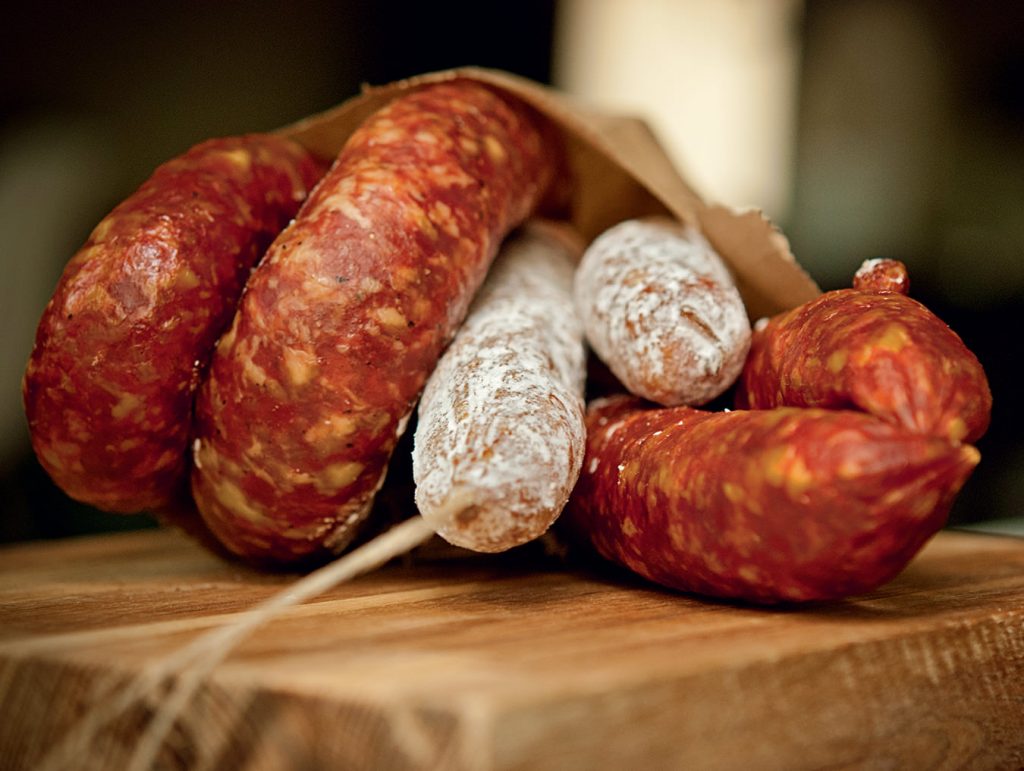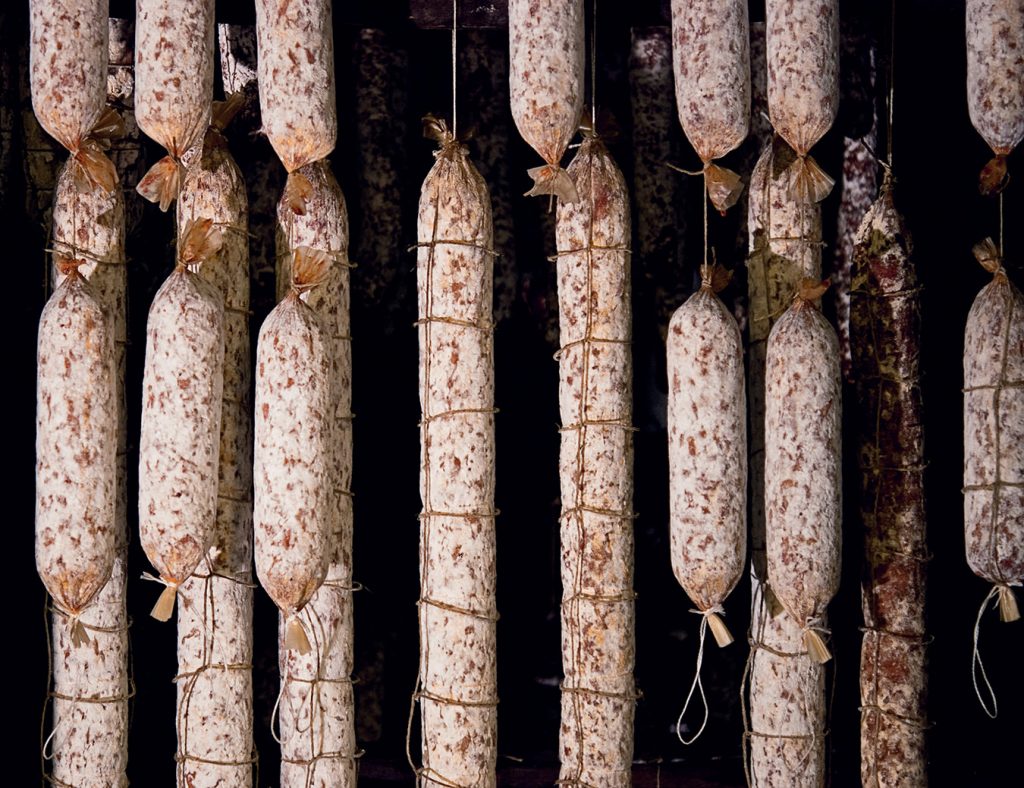In the all-encompassing world of Big Food, there aren’t too many people who have chosen take a step backward in order to move forward. But Drews Driessen has. And he was only too happy to do so. The master sausage maker is happier than a proverbial clam (or maybe that should be pig) when he’s in the diminutive production facility of D-Original Sausage Co., housed in an impossibly small basement not far from the bustle of Main and Broadway. Although visitors aren’t really allowed in (because of health regulations as well as the lack of space), get close enough and you’ll be lured in by the unmistakable aroma of smoked and cured meats. It has captivated Driessen for his entire life.
He grew up in a family of sausage makers. His father was a sausage maker, as were his grandfather and great-grandfather before. All five generations learned their trade under the strictly enforced code of the German Sausage Makers Guild. No surprise, then, that Driessen swears sausage making is in his blood.
“From my father’s side I have this gene, and it has something to do with sausages,” says Driessen. “I don’t know how that works biologically. But that’s how it is. I love sausages—I always have. Always did, always will. As a kid, I just always had to be around it.”
When Driessen turned 16, he apprenticed to be a journeyman in a small butcher’s in Herten, Germany. “We did everything, from the buying of the animal to slaughter to breaking it down and preparing the meat for sausages or aging. We did everything and anything,” he says. Such schooling has served him well. “In those days, there were no shortcuts. There was a master in charge who didn’t allow it. It was all very stern. It was very German. And we did it how it was supposed to be done.”
Somewhere along the line, however, things changed. A new industry emerged that required a different set of skills. Driessen changed, too. He grew with the times and transferred his much valued traditional knowledge into a highly industrial setting, eventually overseeing entire production lines for some of the largest meat processors in Canada and the United States. It was a natural progression. Until the industry forgot its beginnings.
“That’s when I started to tell myself, ‘Drews, you’ve got to get out of this.’ And that’s what I did.” He quit and went looking for the ideal place to return to his roots to rekindle that original passion. In a time when independent butchers were vanishing from the landscape, the search wasn’t easy. But Driessen heard of a shop that had become available after its owner passed away. A few months had gone by since it was last used, but all the original, top-of-line German equipment was still there. Driessen, a necessary fanatic about sterile production, went to work getting the place spotless.
There have been some bumps in the road, such as when, following the exhausting cleanup, the smartly shod city inspector arrived for the final sign-off and turned on the sink—only to find the drain wasn’t connected. Luckily, she laughed along with Driessen, despite sodden shoes. More recently, a spate of too-close-for-comfort fires forced a shutdown, but now all is running smoothly. Best of all, says Driessen, “we are back to what sausage making is all about.”
Standing in his newly built, barely closet-sized curing room, surrounded by scores of hanging hand-tied chorizo, salami, petit rond d’ail, Calabrese, kulen, and more, he explains, “It’s all very natural here. We control the atmosphere by vents. Fans are only used to circulate air and keep it even throughout the aging process.”
But Driessen insists that “ultimately, it’s all about the good meats. And it’s all about the good spices. These are the things we pay close attention to. The technical side is very minimalistic.” The journey back from overprocessed, über-engineered food is now complete. “We don’t rely on any chemical ingredients, binders, fillers, flavourings, colourings, or whatever. You name it. All that crap—we just don’t have it,” proclaims Driessen in a manner that’s if anything more relieved than fanatical. “Not even truffle oil—we use the real thing.”
D-Original Sausage fans are now legion—especially as people are getting more knowledgeable about their food, suggests Driessen as he slices into a perfectly finished salame al tartufo, made with black and white summer truffles, of course. “They really want to know what’s in it. And that culture has now become mainstream, because there are so many things wrong with the industry. But don’t get me started!”
Driessen’s creations can be found at various restaurants in the Lower Mainland, including Hawksworth, Sardine Can, Portland Craft, Rainier Provisions, Salt, and Bitter.










